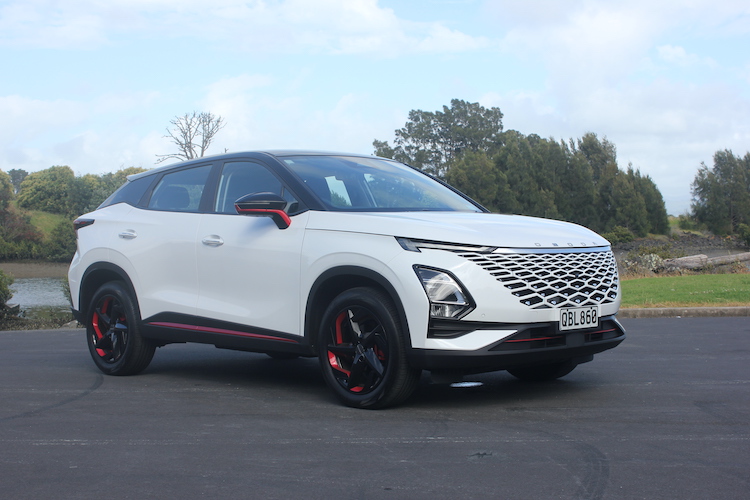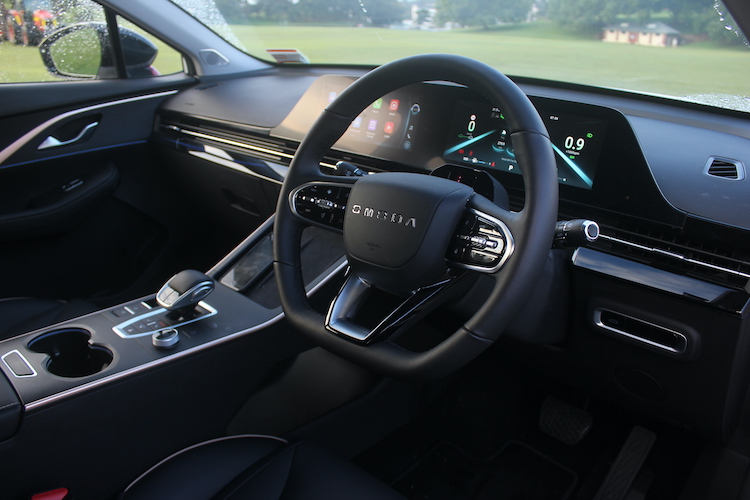
A new Chinese brand, Omoda, is entering New Zealand with a small SUV called the C5 in which to target the most competitive segment in the market.
Not only will the technology-forward Omoda C5 compete with the Chinese-built MG ZS and Haval Jolion in the value-for-money stakes, but it also has the ageing Mitsubishi ASX as well as the Kia Seltos and Toyota Yaris Cross amongst others in its gunsights.
Fleets will do well to take note of the new brand, as we expect it will be closely priced to the other two Chinese brands, and to further boost buyer confidence a seven-year unlimited km warranty with seven-years roadside assistance will be offered from market launch.
It’s got some features and benefits that outclass the Japanese and Korean brands let alone its rivals from the home market
Omoda is one SUV brand being introduced locally by Chery Motor, and the other is Jaecoo, signage is beginning to appear on dealership forecourts around the country as the market launch quickly beckons.
Hence Omoda Jaecoo New Zealand country manager Sheldon Humphries loaned this publication an Omoda C5 with an entry-level 1.5-litre turbocharged engine but a fully loaded premium specification to get a brief taste of what lies ahead for the market.
A more powerful 1.6-litre turbocharged engine with a seven-speed automatic transmission will become available to the New Zealand market for the C5, and in addition, a full battery electric version known as the Omoda E5 will also be in the product mix.
The numbers
Measuring 4400mm in length, 1830mm in width and 1588mm in height, the Omoda C5 is among the biggest in its segment. Boot capacity is 360 litres with the rear seats in place and 1075 litres with the rear seats folded flat.
It’s powered by a turbocharged 1.5-litre petrol engine, producing 115kW and 230Nm, which drives the front wheels via a Constantly Variable Transmission with nine ‘steps.
Combined fuel use is quoted at 6.9L/100, while the Omoda C5’s 50-litre fuel tank will accept 91RON fuel.
The design
The Omoda brand set out to create a unique-looking vehicle in the segment and it succeeded.
It says its new Art in Motion design language resulted in this coupe-style crossover SUV, with a silhouette that improved its aerodynamic performance, reducing drag and improving its handling.
The one-piece Star Diamond Grille provides a 3D effect, with the combination of a gradient-shaped grid and diamond detailing that sets it apart from other brands, with LED headlights and T-shaped daytime running lights. At the rear Piano-style tail lights deliver road presence at night.
The features
The Omoda C5 as road-tested by the publication was equipped with 18-inch wheels, remote engine start (and the ability to preheat or pre-cool the cabin), keyless entry with push-button start and a noise-reduction windshield with silent wipers as standard.
In addition, there are synthetic leather seats, twin-zone climate control with rear vents, power-adjustable front seats, powered tailgate, powered sunroof, one-touch power windows in all four doors and ambient lighting in the front and second row of the cabin.
Further specification includes the red brake callipers and detailing around the body, along with puddle lighting, heated front seats and a heated steering wheel.
In front of the driver is a twin-screen digital dashboard cluster with a 10.25-inch odometer display joined by a 10.25-inch central infotainment screen. The latter delivers wireless Apple CarPlay and Android Auto, with wireless device charging paired with an eight-speaker Stony stereo system.

A customisable “Hello Omoda” voice-control feature allows drivers to operate key functions, such as making phone calls or changing the music, without having to take their hands off the wheel and reducing the need for manual interaction with the infotainment system.
The Omoda 5 also offers QI wireless charging (as well as USB ports) with a Tesla-like flocked area on the lower dash to rest your cell phone upon.
The safety
The Omoda C5 carries a five-star Euro NCAP safety rating as desired by most fleet purchasers. It scored 87% in Adult Occupant and Child Occupant testing, as well as 88% in Safety Assist testing and 68% in Vulnerable Road Users testing.
Occupants are protected by seven airbags including a front, side, curtain and centre airbag.
There is an alphabet soup of acronyms that compile the safety systems found within the Omoda C5 including LCA (Lane Change Assist), LDW (Lane Departure Warning), LDP (Lane Departure Prevention) BSD (Blind Spot Detection) ACC (Adaptive Cruise Control), ICA (Integrated Cruise Assist), FCW (Front Collision Warning), RCTA (Rear Cross Traffic Alert), RCTB (Rear Cross Traffic Braking), and AEB (Automatic Emergency Braking).
In addition, there is also TJA (Traffic Jam Assist), SLIF (Speed Limit Information Function), SCF (Speed Control Assist), TSR (Traffic Sign Recognition), DMS (Driver Monitoring System), IHC (Intelligent Headlamp Control), and ELK (Emergency Lane Keeping).
A special mention needs to go to the Omoda C5’s 360-degree around-view camera, which is one of the best in the class thanks to its interactive 3D model of the car, you are never left in any doubt as to what other vehicles or objects are around you when on the move or when parking.
The driving experience
Thanks to its higher hip-height getting in and out of the Omoda C5 is easily done in tight parking spots and the leather seats are comfortable to sit in, though taller drivers might find the sunroof impinges on head clearance.
The fit, finish and quality of the interior are absolutely on par with the Japanese and Korean competitors in this segment, there are a few hard-touch plastic surfaces around the cabin, but this reflects the price point at which the car is aimed.
All of the controls, buttons and switches have a quality feel to their operation, and the indicator chime is one of most discreet we’ve yet come across. The driver distraction warning system is also to be commended as it will remind you where you need to be looking when you are not.
In spite of the turbocharged four-cylinder 1.5-litre petrol engine’s output looking modest on paper, in day-to-day use, the C5 is quite responsive and sprightly, no doubt helped by the CVT transmission which makes the best use of the power and torque available.
Fuel consumption in urban environments hovered around 8l/100km and in the low sevens on the motorway which means the quoted combined consumption of 6.9l/100km isn’t a pie-in-the-sky figure. The engine can be a bit raucous when heavy acceleration is called for, but this is common in CVT applications.
The C5 offers a comfortable ride and confident handling on all New Zealand road surfaces, though there is some tyre noise on coarse chip seal, and the featherweight feel of the power steering system comes into its own when you are twirling your way through a multi-storey car park.
All in all, it’s a very good first effort from an incoming new car brand and this has been shown by the uptake in overseas markets, particularly Australia, where more than 5000 units of the C5 were sold in the first year of sales.








